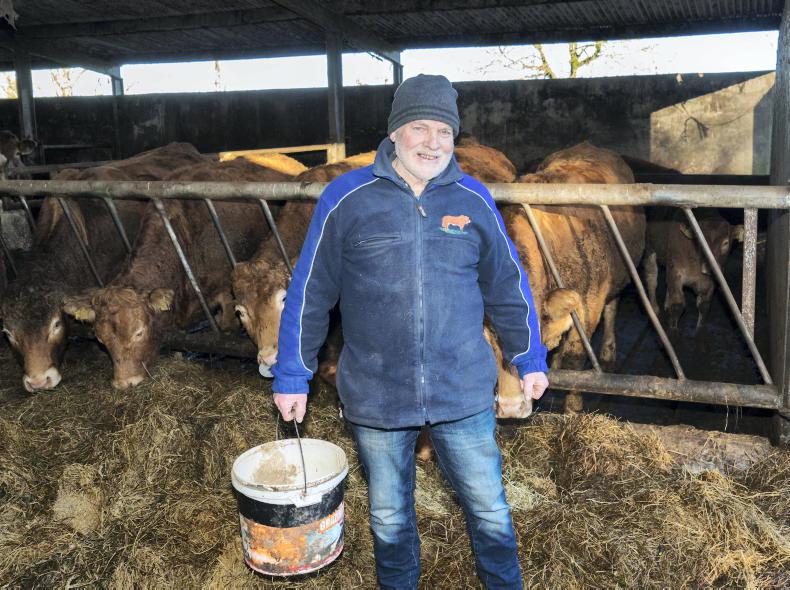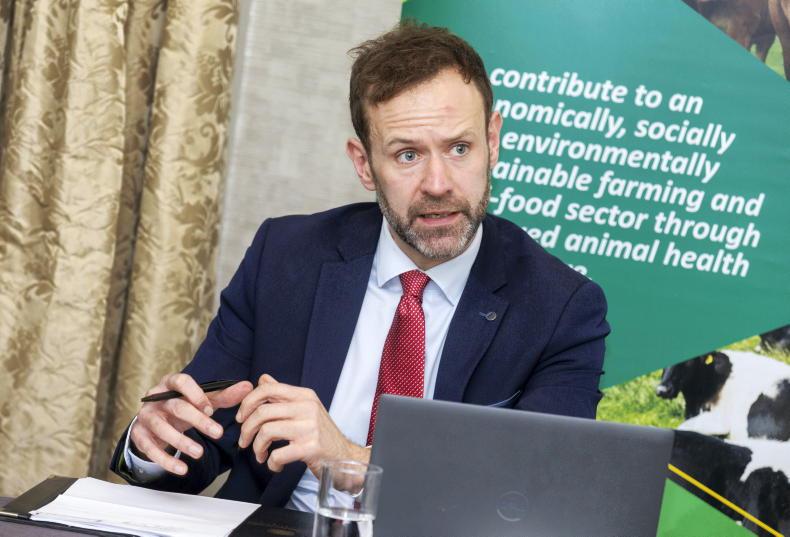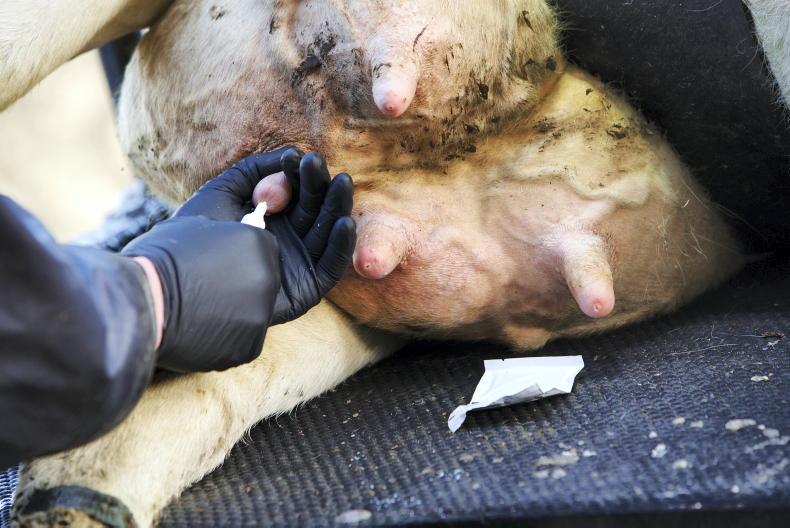All of the milk processors that have a sustainability scheme in place include milk recording as one of the actions in order to secure the sustainability payment. The increased incentives for milk recording has led to a huge increase in the number of herds and the number of cows being milk recorded at least four times per year. There has been a 55% increase in the number of cows’ milk recorded so far this year, compared to the same period in 2017.
By itself, milk recording will do nothing for sustainability so it’s not the action of milk recording by itself that the co-ops are trying to incentivise, it is the actions taken as a result of milk recording that’s important. Having said that, there are benefits for the national breeding programme by just milk recording herds where sires are identified, as the data will help to improve the reliability of a bull’s Economic Breeding Index (EBI).
However, from a sustainability point of view the main benefits of milk recording are as a result of the actions taken on-farm with the information. Essentially, there are two pieces of information from milk recording; the somatic cell count (SCC) and the milk solids yield per test and per lactation. Within milk solids, the volume, fat and protein content can be ascertained.

Milk recording results should be analysed carefully to get the most from them
With this information, farmers can identify their most productive cows and their most unproductive cows. The main action to be taken with the unproductive cows is to cull them from the herd. The vision the milk processors and the industry in general has is that by culling the bottom say 5% of the herd per year, the output from the herd will increase over time, so overall output increases with the same number of cows or the number of cows decreases with output staying the same.
Both will give benefits in terms of greenhouse gas emissions but in different ways. Keeping cow numbers the same and increasing output will reduce the intensity of emissions per kilo of milk eg dilution effect, while reducing the cow numbers will reduce the overall level of emissions. This is because the cow herself is the main source of greenhouse gas emission due to methane gas from the rumen.
Now, being able to cull any cow as a result of poor production is to be in a fairly lucky position. Other issues, the big one being infertility but also high SCC and lameness usually render 15% to 20% of cows moving into the cull cow category. With a target replacement rate of 18% to 20% per year, that means that very few cows can be culled for production reasons.
Therefore, improvements in herd genetics can’t only be geared towards more milk production, as fertility and health are hugely important in order to be able to get the benefit of any improvement in milk production. Because, if cows are leaving the herd due to the aforementioned issues, the farm will never get the benefit of the genetic potential for more milk solids.
Of course, management has a big part to play here too. Good breeding management and good roadways and hygienic conditions in the parlour and sheds will reduce the likelihood of cows leaving due to infertility, lameness or SCC. In terms of SCC, the milk recording data will tell what cows are contributing most to the SCC problem on the farm.
Presuming there is room to cull cows for production, the next step is to know where to start. In the main, I would be slow to look at the production from a first or second lactation cow with a view to identifying cows to cull. OK, we know that these younger cows are going to produce less anyway, but we could say if a cow produced less than the lactation average, she could be a candidate for culling. However, these are young cows and still growing, so give them at least two lactations to prove themselves before culling them for poor production.
Culling
They should get no reprieve when they are in third lactation and above. Cows that are underperforming here should be earmarked for culling. The ICBF have an index or ranking of all cows in the herd based on their predicted future value.
The ranking is called Cow’s Own Worth (COW) and it identifies the cows that should be culled based on milk production and fertility criteria.
Importantly, milk recording data shouldn’t be used as the sole source for making breeding decisions. With a substantial increase in dairy beef bulls being used across the dairy herd, more and more cows are being bred with beef. However, these cows should be identified through the EBI report, not the milk recording report.
Low EBI cows are genetically inferior and should therefore be bred with beef bulls. In other words, don’t breed replacements from them.
It is possible that some of the lower EBI cows in a herd will be outperforming the higher EBI cows in terms of milk solids production.
However, this is more than likely down to some advantage for those lower EBI cows and some disadvantage for the higher EBI cows that is not related to genetics. On the law of averages the higher genetic merit animals will perform better. The outliers described above have inferior genetics meaning they won’t pass on whatever advantage they have to their progeny.
Therefore, use the milk recording data for culling and use the EBI report to determine what cows are to breed replacements and what cows are to get beef straws.
Maximising genetic gain in the herd will come from a combination of cull hard and breeding high merit bulls to high merit cows.
Milk recording should be used as a tool to determine which cows should be culled.The genetics of the cow should be used to determine which cows are bred for replacements.Most of the co-ops are incentivising milk recording through sustainability payments.There has been a 55% increase in cows being milk recorded since 2017.
All of the milk processors that have a sustainability scheme in place include milk recording as one of the actions in order to secure the sustainability payment. The increased incentives for milk recording has led to a huge increase in the number of herds and the number of cows being milk recorded at least four times per year. There has been a 55% increase in the number of cows’ milk recorded so far this year, compared to the same period in 2017.
By itself, milk recording will do nothing for sustainability so it’s not the action of milk recording by itself that the co-ops are trying to incentivise, it is the actions taken as a result of milk recording that’s important. Having said that, there are benefits for the national breeding programme by just milk recording herds where sires are identified, as the data will help to improve the reliability of a bull’s Economic Breeding Index (EBI).
However, from a sustainability point of view the main benefits of milk recording are as a result of the actions taken on-farm with the information. Essentially, there are two pieces of information from milk recording; the somatic cell count (SCC) and the milk solids yield per test and per lactation. Within milk solids, the volume, fat and protein content can be ascertained.

Milk recording results should be analysed carefully to get the most from them
With this information, farmers can identify their most productive cows and their most unproductive cows. The main action to be taken with the unproductive cows is to cull them from the herd. The vision the milk processors and the industry in general has is that by culling the bottom say 5% of the herd per year, the output from the herd will increase over time, so overall output increases with the same number of cows or the number of cows decreases with output staying the same.
Both will give benefits in terms of greenhouse gas emissions but in different ways. Keeping cow numbers the same and increasing output will reduce the intensity of emissions per kilo of milk eg dilution effect, while reducing the cow numbers will reduce the overall level of emissions. This is because the cow herself is the main source of greenhouse gas emission due to methane gas from the rumen.
Now, being able to cull any cow as a result of poor production is to be in a fairly lucky position. Other issues, the big one being infertility but also high SCC and lameness usually render 15% to 20% of cows moving into the cull cow category. With a target replacement rate of 18% to 20% per year, that means that very few cows can be culled for production reasons.
Therefore, improvements in herd genetics can’t only be geared towards more milk production, as fertility and health are hugely important in order to be able to get the benefit of any improvement in milk production. Because, if cows are leaving the herd due to the aforementioned issues, the farm will never get the benefit of the genetic potential for more milk solids.
Of course, management has a big part to play here too. Good breeding management and good roadways and hygienic conditions in the parlour and sheds will reduce the likelihood of cows leaving due to infertility, lameness or SCC. In terms of SCC, the milk recording data will tell what cows are contributing most to the SCC problem on the farm.
Presuming there is room to cull cows for production, the next step is to know where to start. In the main, I would be slow to look at the production from a first or second lactation cow with a view to identifying cows to cull. OK, we know that these younger cows are going to produce less anyway, but we could say if a cow produced less than the lactation average, she could be a candidate for culling. However, these are young cows and still growing, so give them at least two lactations to prove themselves before culling them for poor production.
Culling
They should get no reprieve when they are in third lactation and above. Cows that are underperforming here should be earmarked for culling. The ICBF have an index or ranking of all cows in the herd based on their predicted future value.
The ranking is called Cow’s Own Worth (COW) and it identifies the cows that should be culled based on milk production and fertility criteria.
Importantly, milk recording data shouldn’t be used as the sole source for making breeding decisions. With a substantial increase in dairy beef bulls being used across the dairy herd, more and more cows are being bred with beef. However, these cows should be identified through the EBI report, not the milk recording report.
Low EBI cows are genetically inferior and should therefore be bred with beef bulls. In other words, don’t breed replacements from them.
It is possible that some of the lower EBI cows in a herd will be outperforming the higher EBI cows in terms of milk solids production.
However, this is more than likely down to some advantage for those lower EBI cows and some disadvantage for the higher EBI cows that is not related to genetics. On the law of averages the higher genetic merit animals will perform better. The outliers described above have inferior genetics meaning they won’t pass on whatever advantage they have to their progeny.
Therefore, use the milk recording data for culling and use the EBI report to determine what cows are to breed replacements and what cows are to get beef straws.
Maximising genetic gain in the herd will come from a combination of cull hard and breeding high merit bulls to high merit cows.
Milk recording should be used as a tool to determine which cows should be culled.The genetics of the cow should be used to determine which cows are bred for replacements.Most of the co-ops are incentivising milk recording through sustainability payments.There has been a 55% increase in cows being milk recorded since 2017. 









SHARING OPTIONS